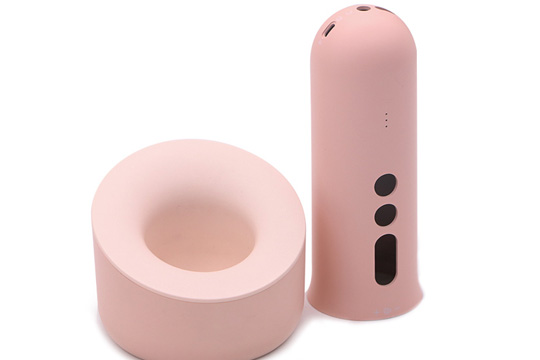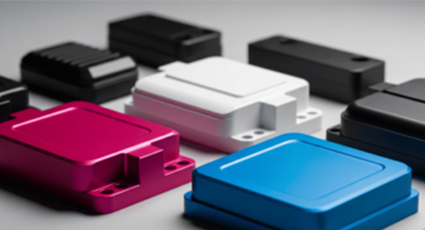Metal parts often suffer from corrosion and poor finishes. Customers seek durability and aesthetics without driving up costs. The right aluminum coating ensures long-lasting protection and premium appearance. Aluminum coatings provide corrosion resistance, durability, and visual enhancement for a wide range of industries. From automotive to medical, the correct coating for aluminum ensures performance, protection, and cost efficiency.
Read on as I explore all the types, benefits, and CNC machining solutions for coated aluminum.
What is Aluminum Coating?
Aluminum coating is a way of adding a protective or decorative layer to aluminum parts. You can think of it as putting a jacket on the metal. It protects the surface from rust and corrosion, makes it stronger, and can also improve its appearance. This extra layer helps the parts last longer and work better.
There are several methods to apply aluminum coatings. These include physical methods, chemical methods, and electrochemical methods. The choice depends on how the part will be used and what performance is required. In fields such as CNC machining, automotive manufacturing, aerospace, and medical devices, choosing the right aluminum coating helps achieve a good balance of performance, durability, and cost efficiency.

What Are the Main Types of Aluminum Coating?
Different industries require different types of aluminum coatings depending on the desired protection, appearance, and performance. Here are the most widely used options in CNC machining and precision manufacturing.
1. Anodizing
Anodizing is an electrochemical process that creates a layer of aluminum oxide on the surface. This layer is much harder than the base aluminum, increasing scratch resistance and corrosion protection. Anodized aluminum can also be dyed in various colors for aesthetic purposes. It is commonly used in high-precision CNC machining parts, aerospace components, electronic housings, and architectural panels.

2. Powder Coating
Powder coating involves spraying a fine powder onto the aluminum surface, which is then heated to form a smooth, durable layer. This coating is thick and long-lasting, offering excellent resistance to weather, UV rays, and abrasion. It is ideal for outdoor furniture, automotive body parts, construction materials, and appliances.
3. Painting
Painting aluminum provides both protection and design flexibility. A clear coat can maintain the natural metallic look, while colored industrial paints can withstand harsh environments. Painting is widely used in consumer electronics, automotive trims, decorative panels, and industrial machinery.

4. PVD and Aluminized Coating
Physical Vapor Deposition (PVD) and aluminized coatings create a very thin, high-performance layer on the aluminum surface. These coatings are extremely hard, wear-resistant, and often heat-resistant, making them suitable for aerospace parts, medical instruments, optical lenses, and luxury products. PVD also allows a range of metallic finishes for aesthetic appeal.
5. Electroplating
Electroplating deposits a thin layer of another metal, such as nickel, chrome, or copper, onto aluminum through an electrochemical process. This provides decorative finishes, additional corrosion resistance, and improved electrical conductivity. Electroplating is used in electronics, automotive trims, connectors, and decorative hardware.
Summary
| Coating Type | Process | Key Benefits | Typical Applications |
|---|---|---|---|
| Anodizing | Electrochemical oxidation | Hard surface, corrosion-resistant, dyeable | CNC parts, aerospace, electronics, architecture |
| Powder Coating | Electrostatic powder + curing | Thick, durable, weather-resistant | Outdoor furniture, automotive, construction, appliances |
| Painting | Liquid paint/clear coat | Flexible design, protective, color options | Electronics, automotive trims, industrial machinery |
| PVD / Aluminized | Physical vapor deposition | Hard, wear-resistant, heat-stable, premium finish | Aerospace, medical tools, optics, luxury products |
| Electroplating | Electrochemical deposition of metals | Decorative, corrosion-resistant, conductive | Electronics, automotive trims, connectors, decorative hardware |
What Are the Advantages of Aluminum Coating?
Aluminum coatings offer a wide range of benefits that make them essential across many industries. They not only protect the metal but also enhance its performance, appearance, and cost efficiency.
| Advantage | Description | Benefits |
|---|---|---|
| Corrosion Resistance | Coatings protect aluminum from rust, oxidation, and chemical damage | Extends part lifespan, especially in harsh or outdoor environments |
| Enhanced Mechanical Durability | Increases surface hardness and resistance to scratches, wear, and abrasion | Improves strength and reliability of parts |
| Improved Aesthetics | Offers polished, colorful, or decorative finishes | Enhances visual appeal while maintaining metallic look if desired |
| Cost-Effective Process | Reduces maintenance, replacements, and part failures | Saves long-term costs despite initial coating investment |
| Environmentally Friendly | Modern coatings like powder coating or anodizing minimize harmful chemicals and emissions | Reduces environmental impact while maintaining protection |
What Are the Applications of Aluminum Coating?
Aluminum coatings are used across many industries because they improve durability, performance, and appearance of aluminum components. Different coatings are chosen depending on the application’s requirements.
1. Automotive
Aluminum coatings make parts more lightweight, durable, and resistant to corrosion. They are used for body panels, engine components, and trims, helping vehicles last longer while maintaining a premium finish.
2. Medical
High-precision aluminum coatings ensure hygiene, chemical resistance, and safety. They are applied to surgical tools, medical devices, and equipment housings to meet strict regulatory and cleanliness standards.
3. Aerospace
Coated aluminum in aerospace applications improves structural integrity, corrosion resistance, and wear performance. These coatings are used for aircraft frames, engine parts, and other critical components.
4. Electronics
Aluminum coatings enhance thermal performance, electrical conductivity, and visual appeal. They are commonly applied to electronic housings, heat sinks, and consumer devices for both function and design.

5. Industrial Machinery
Protective coatings help aluminum parts withstand harsh conditions, heavy wear, and chemical exposure. This ensures machinery remains reliable and reduces maintenance needs in factories and industrial environments.
How to Choose the Right Coating for Aluminum?
Choosing the right aluminum coating depends on several key factors, including the environment, appearance, cost, and durability. Selecting the correct coating ensures that aluminum parts perform well, last longer, and stay within budget.
Environment
The conditions in which aluminum parts will be used play a major role in coating selection. Outdoor parts exposed to rain, UV light, or chemicals require coatings with excellent corrosion and weather resistance. Indoor components, which face less harsh conditions, may prioritize aesthetics or a smoother finish rather than extreme durability.
Appearance
The desired look of the aluminum part is another important consideration. Some applications require a natural metallic finish, which can be achieved with clear anodizing or PVD coatings. Others may need bright colors or customized textures, which can be delivered with powder coating or paint. The coating choice can therefore balance both functional protection and visual appeal.
Cost
Budget is always a factor when choosing coatings. Powder coating and painting are generally more cost-effective for large surfaces or bulk production. Anodizing and PVD offer higher performance and durability, but at a higher upfront cost.
Durability
Parts that are subject to heavy wear, scratching, or chemical exposure need coatings that provide strong mechanical protection. Anodizing and PVD coatings are excellent choices for such applications, offering superior hardness and resistance to wear. Powder coating and paint can also provide good protection but may not be as long-lasting under extreme conditions.
Industry Examples
Different industries select coatings based on specific needs. Automotive manufacturers often use powder coating for body panels and anodizing for interior trims. Aerospace components rely on anodizing or PVD for structural integrity and corrosion resistance. Medical tools require PVD or anodized coatings for hygiene and chemical resistance. Electronics use clear anodizing or PVD to maintain metallic appearance while improving durability. Industrial machinery may use powder coating or anodizing depending on whether corrosion protection or wear resistance is prioritized.

Start Your CNC Machining Aluminum Coating Project at VMT
VMT offers complete CNC machining and aluminium surface treatment services. From prototype to mass production, our team ensures every coated aluminum part meets strict standards. Whether you need aluminum finishes like anodizing, aluminium powder coating, or advanced aluminum coating technologies, VMT delivers precision, speed, and quality.
In Conclusion
Aluminium coatings deliver durability, protection, and visual appeal. Partner with VMT to achieve advanced CNC machining and reliable aluminum coating solutions.
Frequently Asked Questions About Aluminum Coating
Can Aluminum be Powder Coated?
Yes, aluminum can be powder coated. The surface must be thoroughly cleaned and sometimes pre-treated, such as with anodizing or chemical etching, to ensure proper adhesion. Powder coating provides a durable, weather-resistant, and visually appealing finish, making it ideal for automotive parts, outdoor furniture, and industrial components.
How to Remove Clear Coat from Aluminum Wheels?
To remove clear coat, clean the wheels and apply a chemical paint stripper or clear coat remover. Let it sit per the product instructions, then gently scrape off the softened coating using a plastic or wooden scraper. Rinse and neutralize the surface before refinishing.
How to Remove Powder Coat from Aluminum?
Powder coat can be removed using chemical strippers, media blasting, or heat guns. Chemical strippers dissolve the coating, media blasting abrades it off, and controlled heat softens it for scraping. Always wear protective gear and follow safety guidelines to avoid damaging the aluminum surface.



